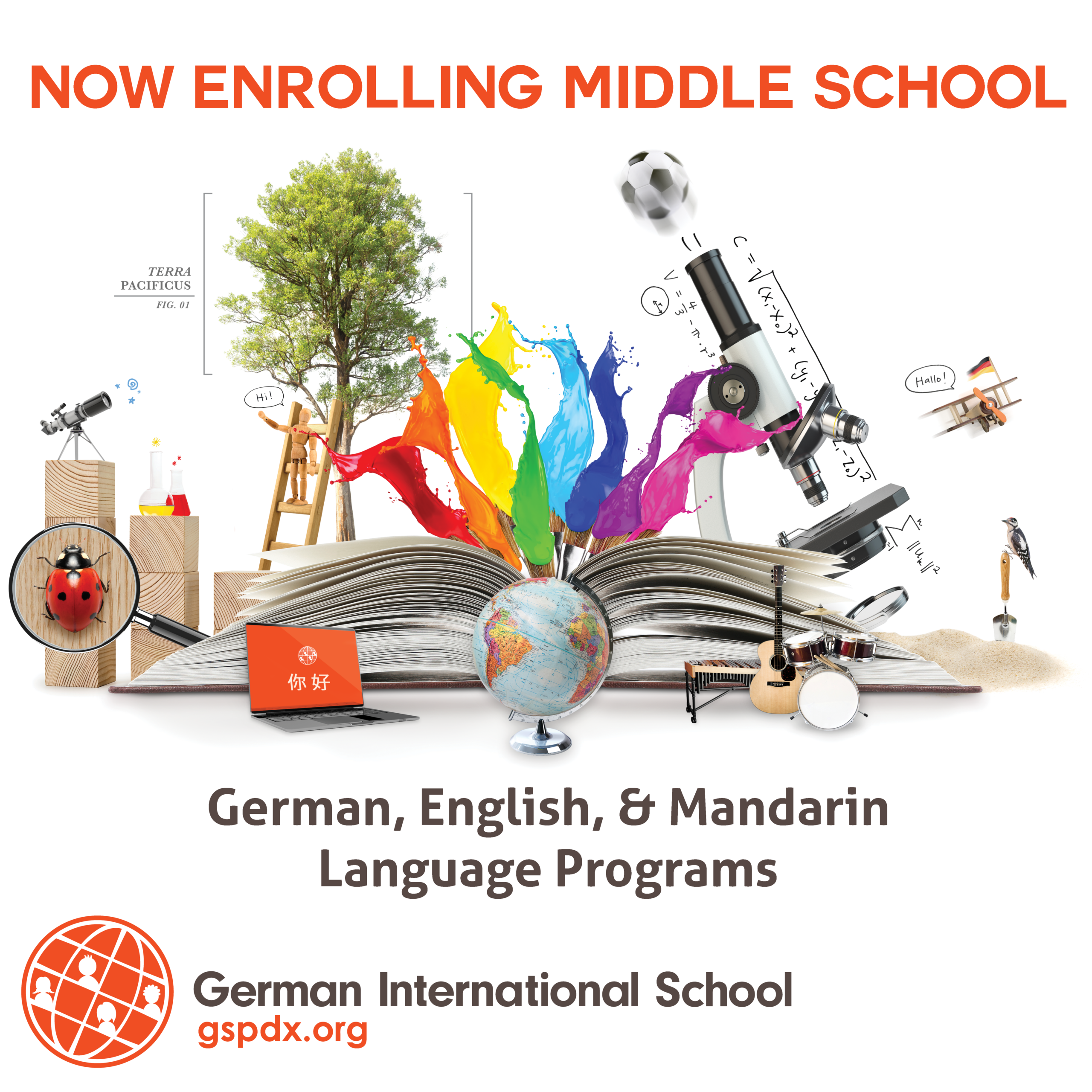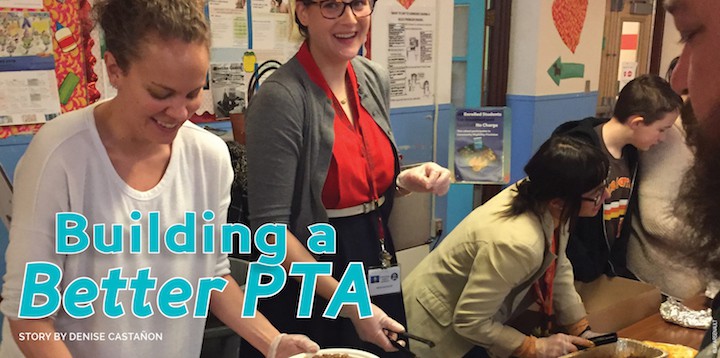
This dynamic Portland PTA is increasing parent participation by removing barriers, building relationships and making meetings more fun. They have tamales, too.
PTA mom. We all know the stereotype. From Big Little Lies to Bad Moms, we see it all the time. Entitled, overbearing and judgey moms who don’t really care so much about the school as they do their individual child’s success. But at Scott Elementary School in Northeast’s Cully neighborhood, that tired (and often unfair) trope is nowhere to be found. In the 2018-2019 school year Kristen Hoffman took the reins of the Scott PTA, and along with her board, radically changed the way their PTA operates. Why? To reach every single family in the school, especially the school’s large Latinx community and the growing group of Somali families.
Scott is one of the most diverse schools in Portland Public Schools. The school is home to a dual-language Spanish immersion program, and Latinx students make up 41 percent of the school’s population. Black students account for 18 percent of the population; Asian and Pacific Islanders account for 4 percent of the students; Native students make up 2 percent of the population; 7 percent of Scott students are multiracial; white students are just under 30 percent of the population. It’s also a high-poverty, Title 1 school with more than 95 percent of students on free and reduced lunch. In addition to Spanish and English, Vietnamese and Somali are spoken by Scott families.
“For being in Portland, which isn’t a very diverse city, we have a really diverse school, which I think is something that is very amazing,” says Scott Principal Megan McCarter, who has just started her second year at the school. “It’s one of the reasons that I wanted to come to the school. It’s something that I know our families really value.”
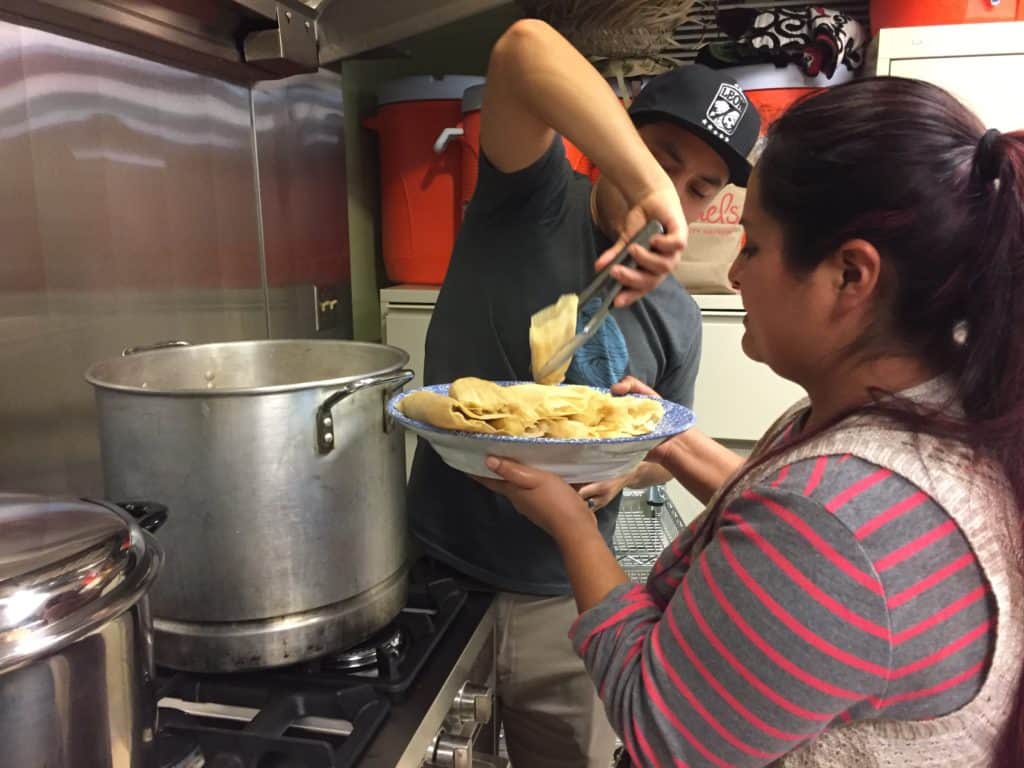
“Our goal was to hold inclusive community events in order to give a voice
to all of our communities to better listen and understand each other’s needs,” says Hoffman.
Listening to Families
So how have Hoffman and her crew gone about making the PTA an organization for all? They started with listening. “Our goal was to hold inclusive community events in order to give a voice to all of our communities to better listen and understand each other’s needs,” says Hoffman. “With that we knew that we would have to get outside of the box of what a normal PTA meeting is. Or what typically has been done in PTA, [and turn meetings] into an opportunity to hold community events.”
“They have basically taken PTA meetings, something that would not necessarily appeal in terms of what’s in the meeting, when the meetings are … and kind of flipped that on its head,” says McCarter. “[They asked] ‘How can we change how we do things to better meet the needs of all of our families?’ Instead of being, ‘Why aren’t our families coming?’ It’s more about, ‘What do we need to change?’”
For example, in December when Hispanic and Latinx families would traditionally gather to make tamales, the month’s PTA meeting was a tamale-making party. Two Latina parents led the preparation of the tamales. February’s meeting was Un Festival de Ciencia, a night of fun science activities from OMSI, with dinner donated from ¿Por Qué No? In March, the PTA invited the Cully neighborhood group Acción Intercultural con Corazón (Intercultural Action with Heart) to do a presentation. The group acts out real-life stories of racism and discrimination to start conversations about how schools can prevent harm and repair relationships. Superintendent Guadalupe Guerrero attended that meeting. “I will invite anyone to come to our meetings,” says Hoffman. “PPS board members, the superintendent, the assistant superintendent, the regional directors. The superintendent, he came to the dramatic piece … I think it was super helpful for him to sit at the table and be able to have these conversations with people in the school.”
In case you were wondering, yes, they do follow Robert’s Rules of Order, but they conduct their PTA business and vote very quickly at the start of the meeting, usually while people are still eating. “We start the business part out by celebrating what we’ve been able to accomplish,” says Hoffman. “And keep it short,” adds Treasurer Klay Arsenault.
Getting Close to Families
But they didn’t just change the style of the meetings; they also changed locations to be closer to the hub of the communities they were trying to reach. The aim was to make it a meeting families could easily walk to. The tamale-making party was held at the Ortiz Community Center. Another was held at the Living Cully Plaza. And they made sure each evening meeting included a meal and child care.
“PTA meetings are typically like 6 to 8 pm and if you are asking people who work, or people with large families to be a part of something — maybe they have a baby and 2-year-old and a 3-year-old and a 10-year-old — you can’t expect them to gather everyone up and leave the house at 6 o’clock to come to a meeting where there is no food and nothing to do for the kids,” says Arsenault. “Because what really helps with including people is to understand that there is more going on than just their life at school. They’ve got a lot going on.”
Principal McCarter acknowledges a big part of the PTA’s new vision included a core understanding. “They completely assumed that every single family wants to be involved with the school and with their kid. And [if they are not involved] it’s not because they don’t want to, but because it doesn’t work for them,” says McCarter.
Reaching Out in Different Languages
So one of the big ways they tried to reach more families was making sure flyers and documents were translated into languages other than English. Even the school’s website through PPS features tabs in both English and Spanish. “We also were committed to holding some of our PTA meetings in Spanish,” says Hoffman.
“I thought it was a really great idea the PTA had,” says McCarter. “It gave a great experience to both sides, Going ‘Oh it’s all in Spanish, so now this is really comfortable for me.’ And then really uncomfortable for people who are normally pretty comfortable.”
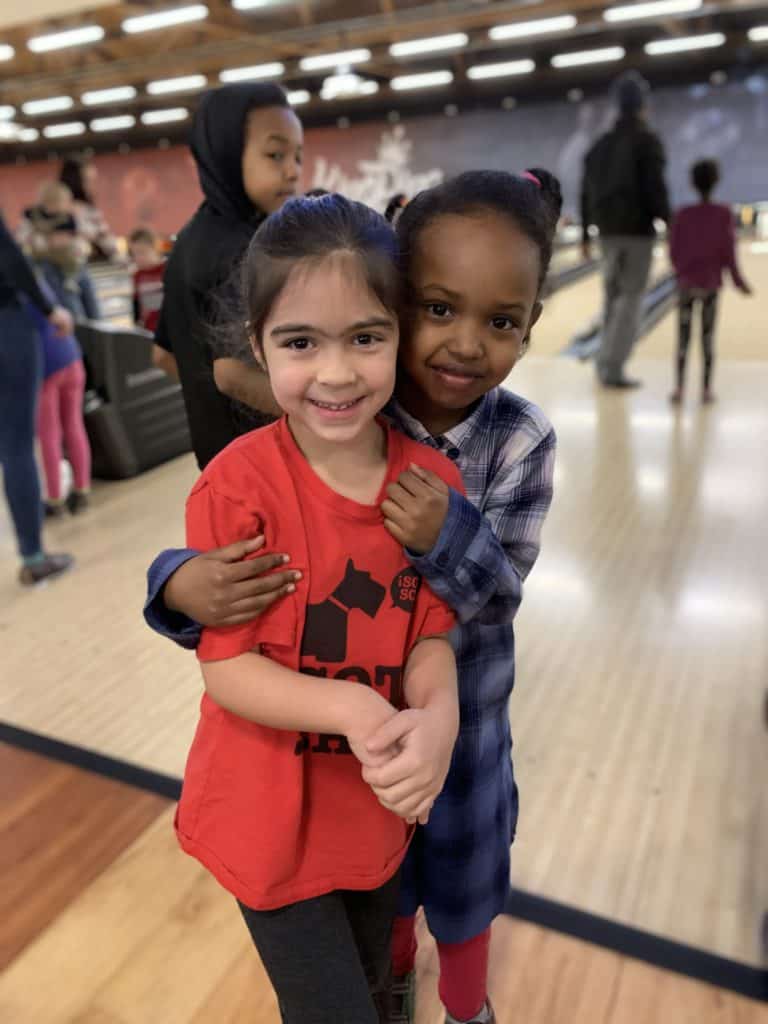
Friends having fun at the Scott PTA family bowling event at
KingPins.
“I went to a few meetings that the Latino Network put on, and it was in Spanish and sitting there with the headsets and English interpretation, you realize how hard it is to be able to effectively communicate things listening to a headset,” says Hoffman.
“It’s hard to not only comprehend, but stay engaged,” adds Arsenault.
Hoffman intends to hold more meetings in Spanish during the 2019-2020 school year. And says hiring high-quality, professional translators for meetings in English is key.
Recruiting bilingual parents who are leaders within their communities has also been crucial. Those parents have helped them build bridges and invite additional parents to meetings. “Part of what we’re doing is not necessarily being a PTA, but trying to make those personal connections,” says Arsenault, “Because everybody understands personal connection. And if you can make a personal connection with somebody who is maybe a different culture than yours, then you can more easily explain what’s happening within the organization. And you can better understand what that person is challenged with and better understand what we as a group with resources can do to help that person.”
The Same Goals
And working closely with McCarter, who shared the goal of making Scott a place where all families are welcomed and valued, has also made a big difference for how much the PTA has been able to accomplish. “We have parents who have done more at this school than I have seen at any school I have worked at,” says McCarter. “I tell the PTA, ‘You guys do stuff that I had to have staff members do!’ Scott’s a really special place, and it’s a really committed community and group of teachers. … We still have a long way to go to get the school where we want it to be. But a great foundation has been laid over the years by this very committed group within our neighborhood.”
Hoffman notes that they are lucky to have a number of community organizers and activist parents at the school. But they often reach out beyond the immediate school community as well. “We’ve been committed as a PTA to work with lots of different community organizations that are doing great work in our neighborhood that we don’t have to recreate,” says Hoffman. They’ve partnered with Living Cully, Portland Backpack, Latino Network, IRCO and KALEO Communities Church, where Hoffman’s husband is one of the pastors.
“We made a commitment, our board, that the PTA is not just a fundraising group for the school,” says Hoffman. “We help provide things for our teachers. But all of our effort and energy is not just gonna be on the sole goal of bringing in all this money. We really decided together that our goal was to bring our community together and our effort and energy was going to be on that.”
Still Work to Be Done
Hoffman, Arsenault and McCarter do acknowledge that they still have a ways to go. “We’ve been really good at getting attention for the work that we are trying to do,” says Arsenault. “But we haven’t necessarily created a completely totally diverse, inclusive PTA board.”
“We’re not exemplar yet!” says McCarter.
But the work they started last year has seen results. The 2018-2019 membership in the PTA increased 113 percent from the year before. Superintendent Guerrero, who had attended their March meeting, gave them the Superintendent’s Award at the PPS/PTA Volunteer Celebration last June.
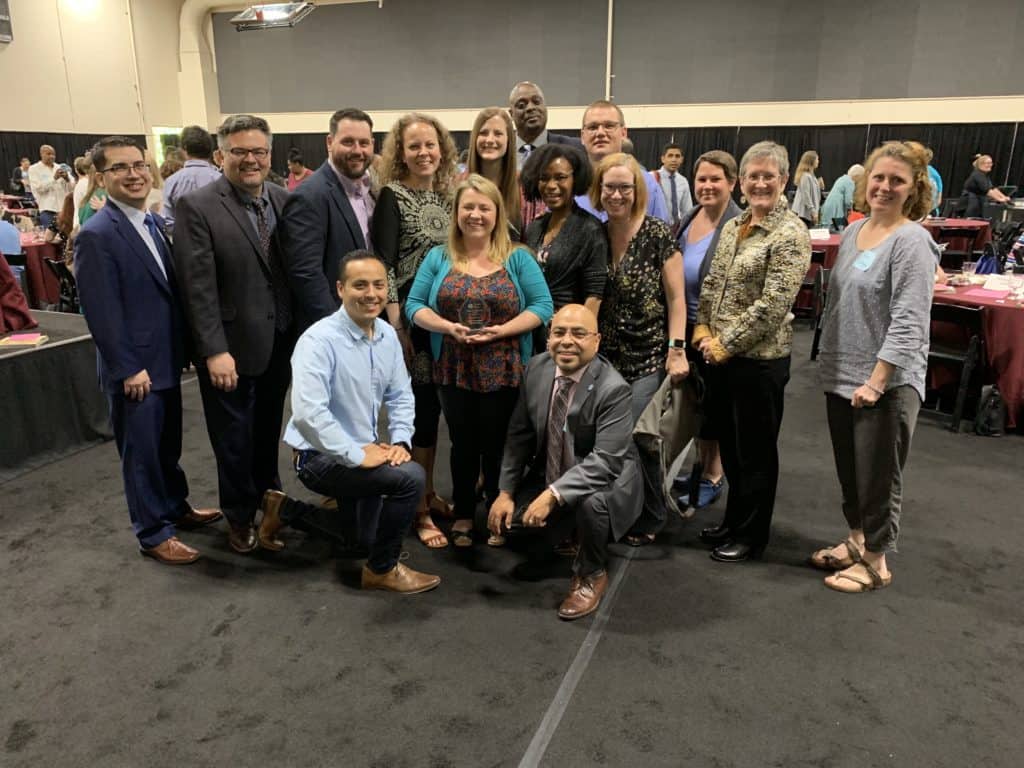
“Our goal this year as a PTA is to have 450 members because there are that many students at the school, and we want each student to have an advocate for them,” says Hoffman.
“Kristen sets very high goals, but she manages to always reach those goals,” says Arsenault. “Don’t underestimate her ability.”
Editor Denise Castañon loves the work the Scott PTA is doing. And making tamales. Maybe she’ll go to their next tamale-making party.
- Where to Get Our Favorite Chopped Sandwich in Portland - March 10, 2024
- 6 New Portland Summer Camps - March 7, 2024
- Get Serious Air at This Indoor Portland Park - February 19, 2024





